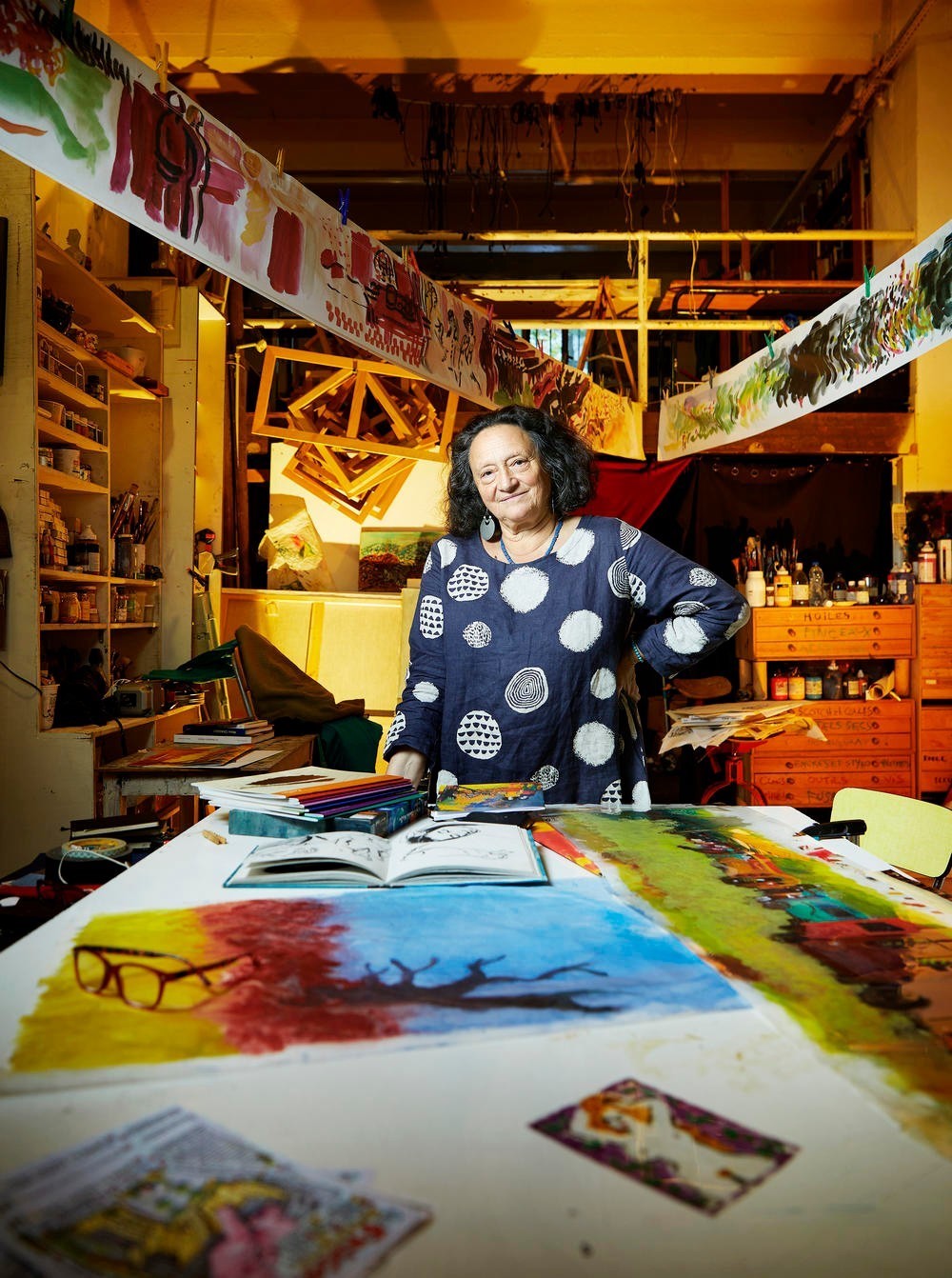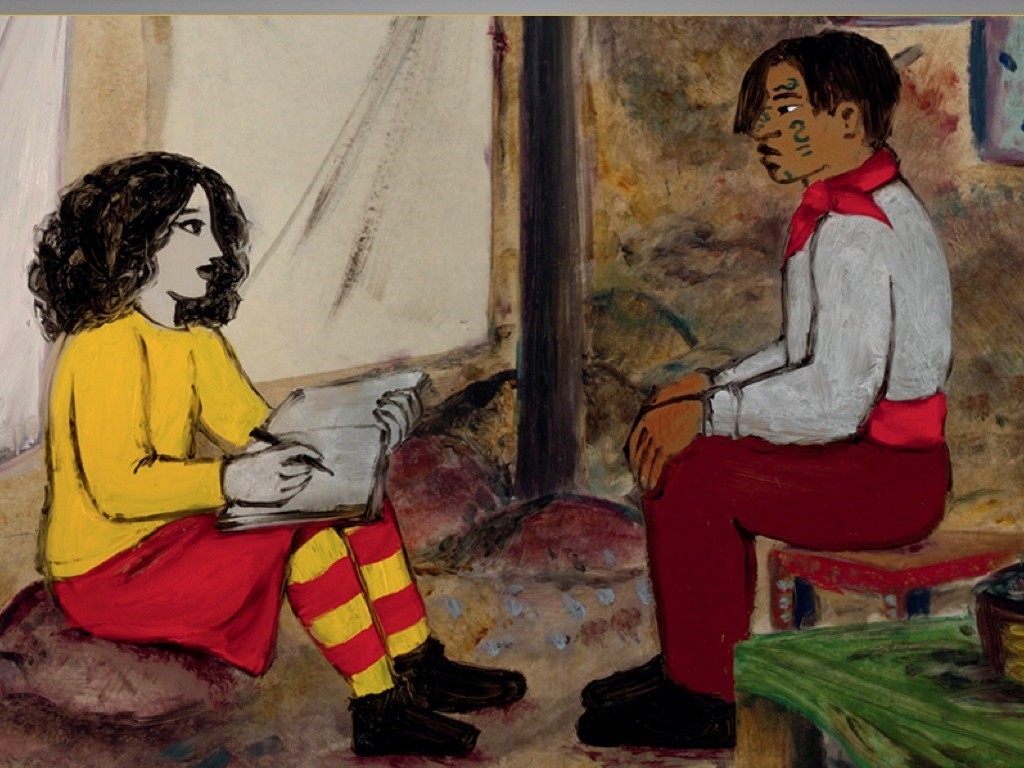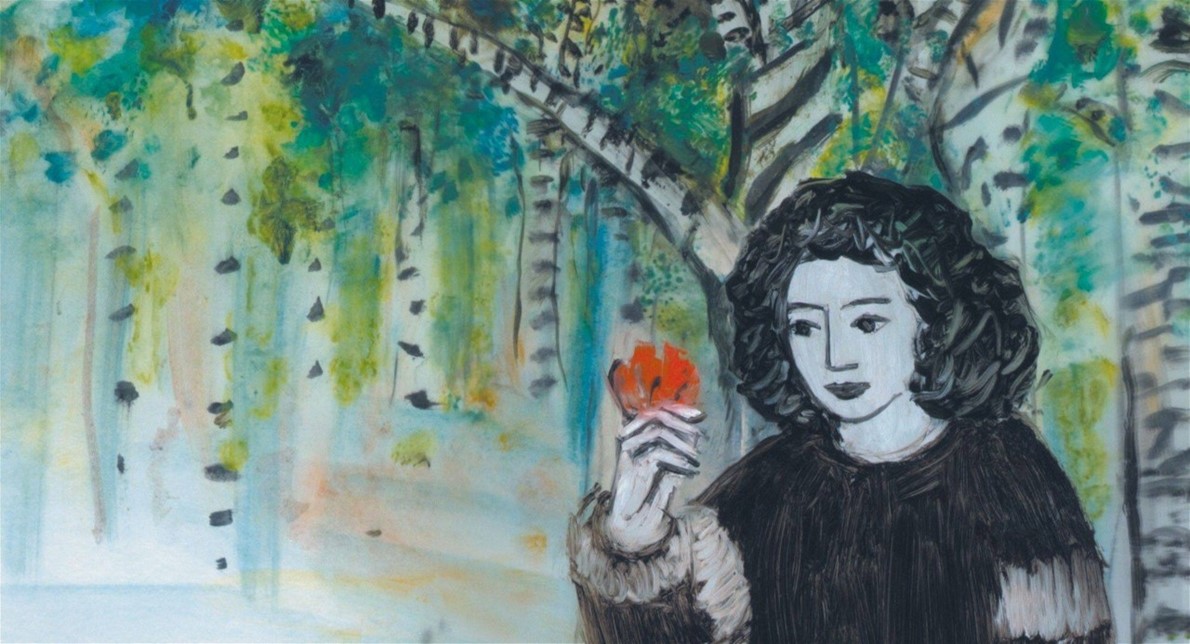Critical, magnificent, and moving,
The Crossing uses animated painting to tell
the epic tale of two children chased through an (almost) imaginary continent.
اضافة اعلان
Their names are
Kyona and Adriel. But they could also be any number of anonymous brother-sister
pairs, unaccompanied minors from the Calais Jungle, or the beaches of Lampedusa the film will be screened at the Royal Film Commission Wednesday.
Their story
begins as a tragedy
After a fire
rages in their village, 13-year-old Kyona and her 12-year-old brother Adriel
escape from the clutches of militiamen who have come to arrest their parents.
Driven to the roads of exile, the young heroes will not stop until they find
their mother and father. All the while, they are fleeing men imbibed with
hatred for “the other”, those whose only crime was being born.
The Crossing, La
Traversée in the original French, is an odyssey strewn with pitfalls but enlightened
by hopeful encounters.
 Multi-award-winning short film director Florence Miailhe shows herself a true artist through the paintings that come to life in The Crossing.
Multi-award-winning short film director Florence Miailhe shows herself a true artist through the paintings that come to life in The Crossing.
The children’s
crossing of a continent is a pivotal journey marking the passage from childhood
to adulthood. Throughout their adventures, Kyona and Adriel learn as much about
themselves as they do about human nature, crossing paths with singular
characters.
There is the
handsome Iskender, an ambiguous figure whose survival instinct has been
sharpened by conflict. There is Madame, circus director by day and mother by
night. Then, there is the mysterious Babayaga, an old lady wounded by life and
visited by spirits. Through the personalities of this trio — the black prince,
the stepmother, and the witch — director Florence Miailhe weaves in threads
from her own migration story, with the help of scriptwriter Marie Desplechin.
A voice from the past
In the film, an elderly Kyona leafs through a book, captivating viewers
with the tones of her deep, soft voice. Konya is played by Miailhe herself, and
the film carries flavors of both the personal and the universal.
Miailhe pays
tribute to her family through this animated feature, as the inspiration for the
poignant plotline was drawn from the stories of her Jewish great-grandparents,
who were victims of the pogroms in Odessa at the beginning of the last century.
Her mother and brother, who lived through the 1940 French Exodus of refugees,
also inspired the story.
Miailhe emerged
onto the film scene in 2002 with Au Premier Dimanche Matin, a sublime short
painted in pastel that tells the story of a village ball, reminiscent of the
goings-on in her parents’ village, where she spent her summers as a child.
In 2007, the
director teamed up with
Marie Desplechin to narrate another, more painful piece
of family history, reimagined in the story of two children lost on the paths of
exile, a coming-of-age tale of a forced march towards hopeful, more peaceful
horizons. The country behind them is never mentioned, nor the era when the
action takes place, perhaps intentionally.
 The Crossing uses animated painting to tell the epic tale of two children chased through an (almost) imaginary continent.
The Crossing uses animated painting to tell the epic tale of two children chased through an (almost) imaginary continent.
In this
ambiguity, The Crossing masterfully conveys both universality and timelessness.
Finding structure in a book of sketches by the heroine, it cycles through
reality, dreams, and nightmares, populated by just as many ogres and monsters
as kindly fairies. The twists and turns of the plot, as flawlessly orchestrated
as the voiceover, keep the suspense building throughout the epic. The medium of
animated painting, a choice belying Miailhe’s decorative arts background,
presents a captivating array of artwork, impressing audiences of all ages.
The fragile matter of memories
Multi-award-winning short film director (winner of a César in 2002)
Miailhe shows herself as a true artist through the paintings that come to life
in the film. Her technique involves painting patterns on glass, photographing
them, and then directly modifying them on the same surface. This method,
unusual to animated cinema, is even less common in feature films. However, it
lends itself perfectly to Kyona’s journey through memories, where the moments
in time are brushed into life, immediately erased, and then repainted with
slight differences, speaking to the fragile, mutable nature of the traces they
leave behind.
 The Crossing, La Traversée in the original French, is an odyssey strewn with pitfalls, but enlightened by hopeful encounters.
The Crossing, La Traversée in the original French, is an odyssey strewn with pitfalls, but enlightened by hopeful encounters.
That said, the
animation itself never takes precedence over the narration, which is deployed
through an elegant staging that harmoniously weds stunning sequences of grace
and beauty with harsher, more austere scenes. With Dora Benousilio of Films de
l’Arlequin as its lead, this stirring cinematic piece will shine for a long
time in the hearts of its spectators.
Awards
The Crossing won the Audience Award for Best International Film at the
Amman International Film Festival in its third edition. It has also won at the
International Competition for Feature Films at Brussels Animation Film
Festival, earning the Grand Prize and Audience Prize at Bucheon International
Animation Film Festival, the Jury Special Mention at Annecy International
Animated Film Festival, and a Special Mention at Warsaw International Film
Festival. The film has participated in the British Film Institute London Film
Festival, San Sebastian International Film Festival, and Palm Springs
International Film Festival.
Read more Reviews
Jordan News



